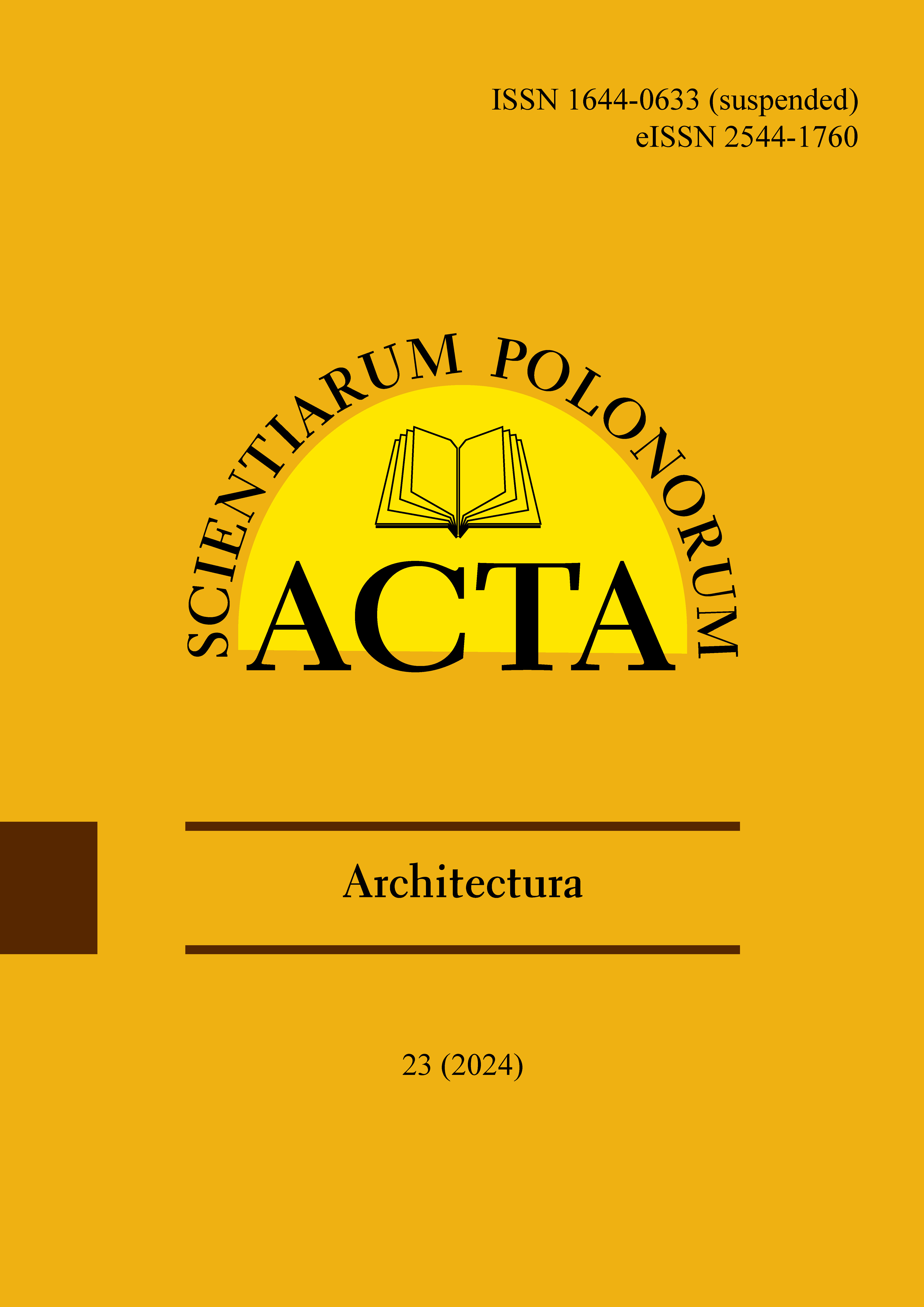Main Article Content
The paper presents an examination of the subsoil settlement in the neighbourhood of a deep excavation with particular reference to the excavation support construction method. Analysis was carried out for a selected deep excavation with a residential building in the vicinity. The most used technologies were considered, i.e., sheet pile walls, soldier pile walls, bored pile walls, and diaphragm walls. A total of 14 wall variants were examined to investigate the differences that certain characteristics have on the surrounding area. The impact of excavation support was assessed for two anchorage level schemes, taking into account three excavation phases. On this basis, the settlement profile next to the excavation wall was determined, and the settlement of the adjacent building was calculated. A key factor identified was the trench wall support scheme. Furthermore, a strong correlation was found between the stiffness of the wall and the maximum settlement observed.
Article Details
European Committee for Standardization [CEN] (2004). Eurocode 7. Geotechnical design. Part 1: General rules (EN 1997-1:2004) [Authority: The European Union Per Regulation 305/2011, Directive 98/34/EC, Directive 2004/18/EC].
Horodecki, G. & Dembicki, E. (2007). Impact of deep excavation on nearby urban area. Proceedings of the 14th European Conference on Soil Mechanics and Geotechnical Engineering (pp. 575–580). Madrid: Millpress Science Publishing.
Hsieh, P-G. & Ou, C-Y. (1998). Shape of ground surface settlement profiles caused by excavation. Canadian Geotechnical Journal, 35 (6), 1004–1017. https://doi.org/10.1139/t98-056 (Crossref)
Long, M. (2001). Database for retaining wall and ground movements due to deep excavations. Journal of Geotechnical and Geoenvironmental Engineering, 127 (3), 203–224. https://doi.org/10.1061/(ASCE)1090-0241(2001)127:3(203) (Crossref)
Korff, M. (2009). Deformations and damage to buildings adjacent to deep excavations in soft soils. Delft Cluster. Deltares. Retrieved from: https://publications.deltares.nl/1001307_004.pdf [accessed: 14.02.2024].
Kotlicki, W. Łukasik, S., Godlewski, T. & Bogusz, W. (2020). Ochrona zabudowy w sąsiedztwie głębokich wykopów. Instrukcje. Wytyczne. Poradniki ITB, 376.
Michalak, H. & Przybysz, P. (2021). Forecasting the impact of buildings with multi-storey underground parts on the displacement of subsoil using modern numerical tools. Studia Geotechnica et Mechanica, 43 (1), 479–491. https://doi.org/10.2478/sgem-2021-0034 (Crossref)
Mei, Y., Wang, L., Zhou, D. & Fu, L. (2022). Displacement characteristics of a deep excavation in Hangzhou soft clay. Advances in Civil Engineering, 2022, 5469471. https://doi.org/10.1155/2022/5469471 (Crossref)
Miedziałowski, C. & Siwik, D. (2014). The impact of deep foundations of building structures on the neighbouring buildings – a static analysis. American Journal of Civil Engineering and Architecture, 2 (4), 136–142. https://doi.org/10.12691/ajcea-2-4-3 (Crossref)
Mitew-Czajewska, M. (2014). Evaluation of deep excavation impact on surrounding structures – a case study. Underground Infrastructure of Urban Areas, 3, 161–172. (Crossref)
O’Rourke, T. D. & Clough, G. W. (1990). Construction induced movements of in situ walls. Proceedings, Design and Performance of Earth Retaining Structures, 439–470.
Pająk, Z., Sękowski, J., Kwiecień, S. & Wieczorek, M. (2018). Uszkodzenia budynków mieszkalnych w sąsiedztwie głębokich wykopów zabezpieczonych oporowymi ścianami szczelinowymi [Damage of the residential buildings in neighbourhood of deep excavations protected by retaining diaphragm walls]. Inżynieria i Budownictwo, 74 (6), 281–285.
Popielski, P. (2012). Oddziaływanie głębokich posadowień na otoczenie w środowisku zurbanizowanym [The influence of deep foundations on urban environment] (PhD thesis). Oficyna Wydawnicza Politechniki Warszawskiej, Warszawa. Retrieved from: http://repo.pw.edu.pl/info/book/WUT291568 [accessed: 14.02.2024].
Schweiger, H. F., Freiseder, M. & Breymann, H. (1999). Deep excavations in soft ground-In-situ measurements and numerical predictions. International Conference on Soil Mechanics and Foundation Engineering (pp. 589–594). London: International Society for Soil Mechanics and Geotechnical Engineering.
Downloads

This work is licensed under a Creative Commons Attribution-NonCommercial 4.0 International License.

